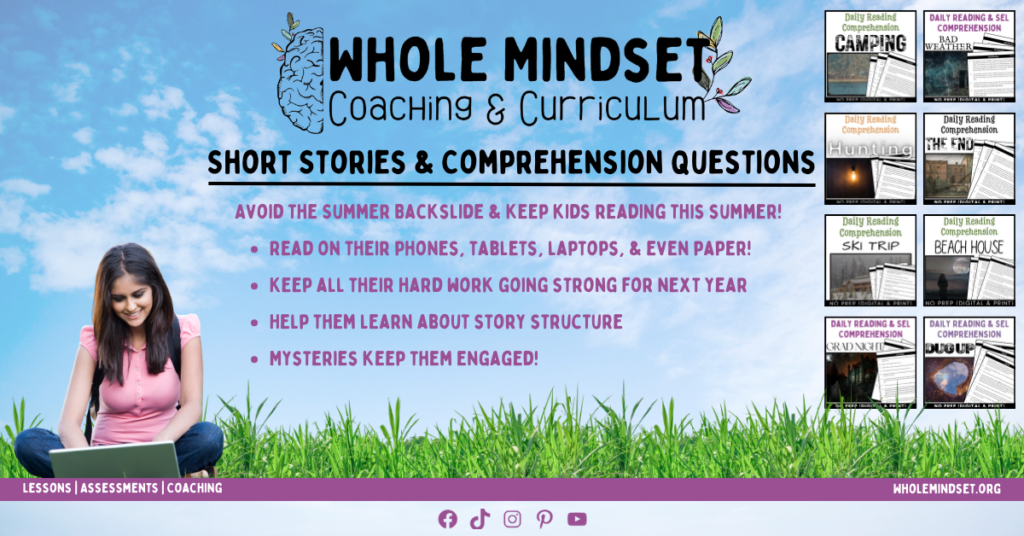Your cart is currently empty!
Active Listening is Good Communication
Communicating is SO much more than just the words we say with our voices. We communicate with every part of ourselves from how much we blink to the positioning of our feet. Ensuring we are being good listeners requires comprehending different perspectives, reflecting back, and not interrupting – to name a few examples.
Active listening is when an individual (the listener) is listening with the intention of internalizing the information. (Side note – I really love that word, intention. One of these days I will write a post about the power of this word.)
You can tell someone is actively listening when they acknowledge you after you speak, they ask open ended questions that lead to deeper connections with the topic, and they keep the focus on you (the speaker) until you are done. Something I see all too often (and I am entirely guilty of this) is a listener responding with their own experience or input that turns the focus onto themselves. While that may not be their intention, it has that effect regardless.
When I was done student teaching, my amazing host teacher happened to bump into me at the grocery store and said she had the most surprising ah-ha moment a few weeks after I was out of her classroom. She realized that I acknowledged every student (with a “thank you” or something similar) after they spoke, regardless of whether or not they were correct. She said she realized the absence of that once I was gone because participation decreased. I had no idea I did that, however once I had a classroom of my own I caught myself doing it. It was a nice little “oh cool” moment for me. I was proud of myself. I’ve come to call this small acknowledgement a micro-communication.
It takes courage to speak up, especially in a classroom full of potentially judgey peers and cute boys/girls, and yada yada yada… I certainly didn’t EVER speak up until I got into college… Then teachers were telling me to let other people have a turn lol… What all this boils down to is that half of good communication is listening.
Confirmation of Listening
You might tell me to read chapters four and five then answer the questions in the text book. Or say we’re having lasagna for dinner tonight. And you may tell me about your recent trip to the Bahamas. Did I really hear you? How do you know?
Maybe I ask which textbook. Or I might suggest we have garlic bread on the side. I might ask a follow-up question about the weather when you were in the Bahamas.
In the first example, I obviously heard you assign the homework because I responded with an appropriately related question. If I weren’t listening, I probably would have said okay and walked out the door (only to show up tomorrow without the homework done because, you guessed it, I wasn’t listening).
In the second example, I obviously was listening because I added an appropriately related suggestion to what you said. Suggestions, like advice, are typically not associated with active listening. However in this case it is adding to the acknowledgment that you were heard.
In the third example, I obviously heard you because I asked a deeper, more probing question so that I could learn more about what you said. This keeps the focus on what you are communicating while also adding to my understanding.
These examples are great ways of seeing that active listening has happened. How can we tell in the moment that it is happening?
Showing You are Listening
In the first example, I would probably have a somewhat neutral facial expression (I’m not elated about having homework), I would be giving you eye contact, probably have my body turned toward yours, and my head would likely be nodding as I listened to you explain the assignment and respond to my follow-up question.
I don’t know about you, but when I tell my kids what’s for dinner (like in the second example), it might be over text, it could be said across the room, or even as they run out the door with their friends. Them hearing me when I tell them what’s for dinner could easily get lost in those situations. So I would look for an audible response.
Sometimes, and I really like this method, I ask them to repeat back to me what I said. Obviously what’s for dinner is not a big deal, but if it’s about watching a younger sibling or doing something important like that, then yeah – I want that clear confirmation. I used this with students frequently. At the end of class I would say to the room, “What’s the homework?” and they would say it back. This was also a nice reminder to the students that weren’t listening the first 60 times I said it.
In the third example, I would expect the listener to be smiling (it’s the Bahamas, come on) and nodding as I describe my amazing trip. Their body would be turned toward me and they would not be doing anything else such as looking at their phone or fiddling with anything. Their follow-up, open-ended, question about the weather would tell me (hey look – more communication!) that they were really picturing what I was talking about. That’s a form of empathizing which is the epitome of active listening. When this happens, it is super cool!
The Other Half of the Communication Equation
So, one half of good communication is listening. The other half is speaking. Duh, right?
Well, there’s more to it than just gargling out some words and expecting everyone to understand. Just as with good listening, a good speaker needs to monitor their body language, facial expressions, etc. And, of course, they need to understand who they are talking to. If someone were to try and explain quantum physics to me I’d fall asleep immediately. But if they want to discuss the socio-economical landscape and its effects on the generational education gaps as they pertain to race, incarceration rates, or higher education attainment then I’m all in.
Imagine a sixth grade English class. I would not try to teach those students the deep symbolism and perspectives of “The Road Not Taken” the first week of school. I would want to take into consideration their attention spans, existing knowledge, and interest levels. No matter how articulate and perfect my communication may be on that subject, the recipients (the listeners) are likely not ready to actively listen if they can’t keep up. However, I could start with a poetry unit that refreshes them on terminology, simpler poems, etc. Then, down the road, I could use Frost as a way of assessing what I taught them.
Essentially, you need to know your audience if you expect active listening in response to your good communication.
In the end though…
Good communication is as simple as listening with a clear head and speaking with clear intentions.
“To effectively communicate, we must realize that we are all different in the way we perceive the world and use this understanding as a guide to our communication with others.”
– Tony Robbins; author, speaker, coach
Working on communication with our students is a critical part of their education. Many of my lessons invite students to participate in discussions and practice active listening and clear communication skills. For teens and adults who want to improve their skills in these areas, I offer virtual 1:1 coaching sessions including academic and personal coaching.
I hope you found this post useful, I certainly enjoyed writing it.



